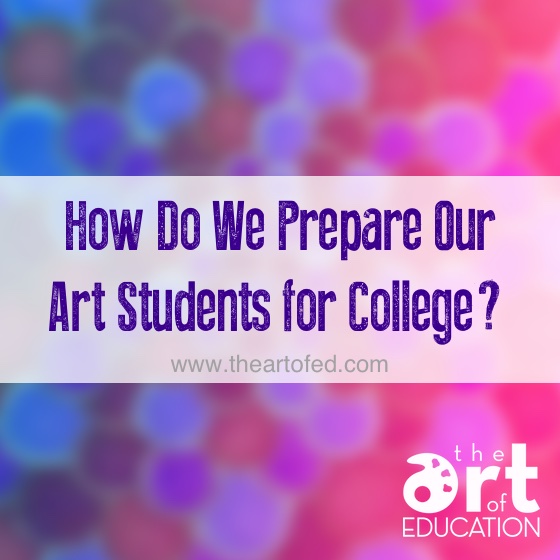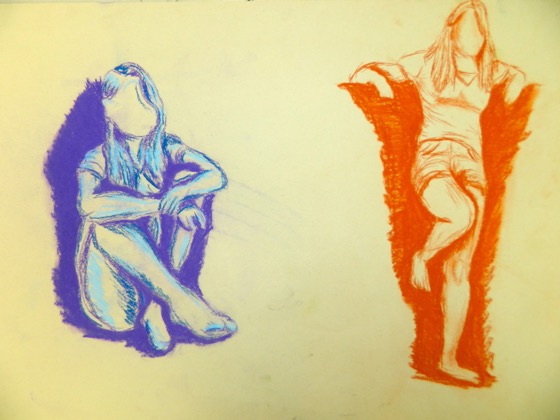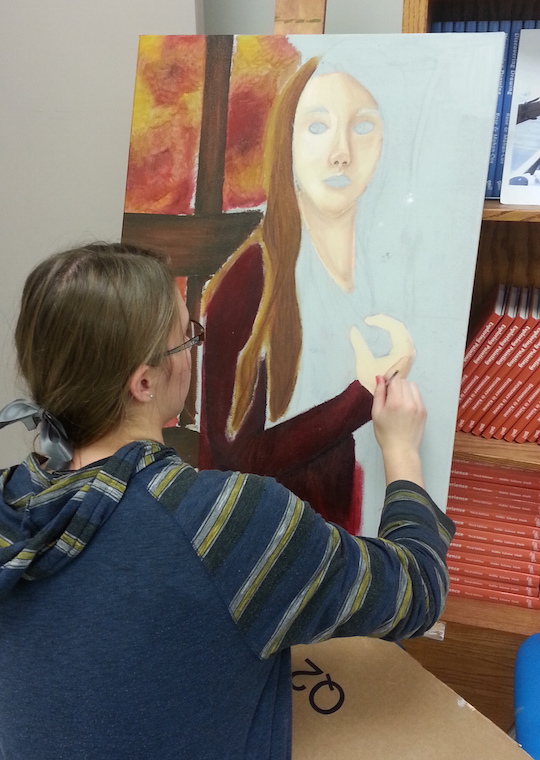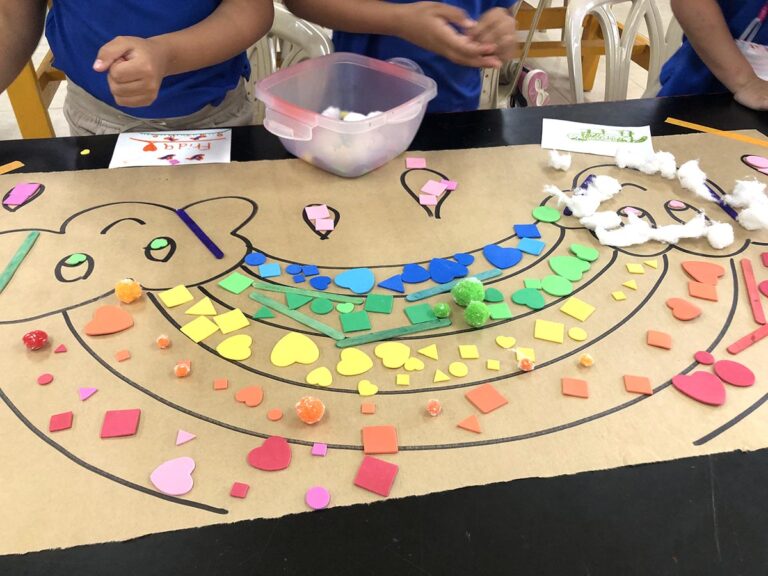As we teach our high schoolers over the course of 3 or 4 years, we inevitably talk to kids about their postsecondary options, and maybe even invite college representatives in to talk to our classes. Some students will go to art school, some will go for a BFA at a university, and others will take a class or two at community college. When we think about these options for our students, a question inevitably arises:
What can we do, and what should we do to get kids ready to study art at the next level?

Of course, there are the big picture things we all do in our classrooms that will help in this regard: developing higher order thinking skills, problem solving, creativity, and the like. Those are skills that will help kids not only in art but everywhere in their lives–both in college and beyond. My question, though, is more about those skills specific to studio art and art history. How can we prepare students to be successful when they study art beyond what is in our high school curriculum? What is our responsibility?
Or, more to the point, DO we have a responsibility? A lot of people might argue that we should teach our kids at the level where we have them right now, without worrying about what is coming in the future. Others would say we need to get kids “prepared” for the next level.
Here’s how I tackle this concern in my own art room: I teach what is appropriate for the high school level, and hope that some of those skills are transferrable once students move on.
For example, like many Art History courses, my Art History class at the high school level involves slide memorization and identification. It also includes writing both short answers and long paragraphs, and longer, comparative essays that utilize higher-order thinking and research skills. Teaching this way gives students a good foundation in art history that is age-appropriate, but also helps them practice useful skills and methods of studying that will serve them well in the future.
As far as studio skills, I don’t think there is a lot that transfers to the college level until students really get into involved art making, most likely during their junior or senior year. At that point, there are a few things that can be done–figure drawing, for example–that serve as practice for specific skills that will be utilized in college.

Most importantly, I want my kids to become familiar with as many materials and processes as they can before they leave my room. For example, projects like slip casting, etching and oil painting are all great stand-alone high school projects, but also expose students to techniques and materials they can build upon in college. Students may not become completely proficient while in my classroom, but building familiarity with materials like these can do nothing but help them in the future.

No matter your approach, you are already doing some things to get kids prepared for studying art at the postsecondary level. There are skills we help develop in the art room that inherently transfer to future studies; there are also materials and processes whose introduction can help make our students’ transitions easier as they move to the next level. Giving students a leg up can always be helpful, but by no means do I think it’s necessary. College is a time for exploration, and they will figure things out as they go. We need only worry about successes that are created in our own classroom walls. If those students’ successes and skills parlay into future success as well, so much the better.
What do you do to get students ready for college-level art?
What skills do you teach in your art room that are transferrable to a higher level of study?
Magazine articles and podcasts are opinions of professional education contributors and do not necessarily represent the position of the Art of Education University (AOEU) or its academic offerings. Contributors use terms in the way they are most often talked about in the scope of their educational experiences.




